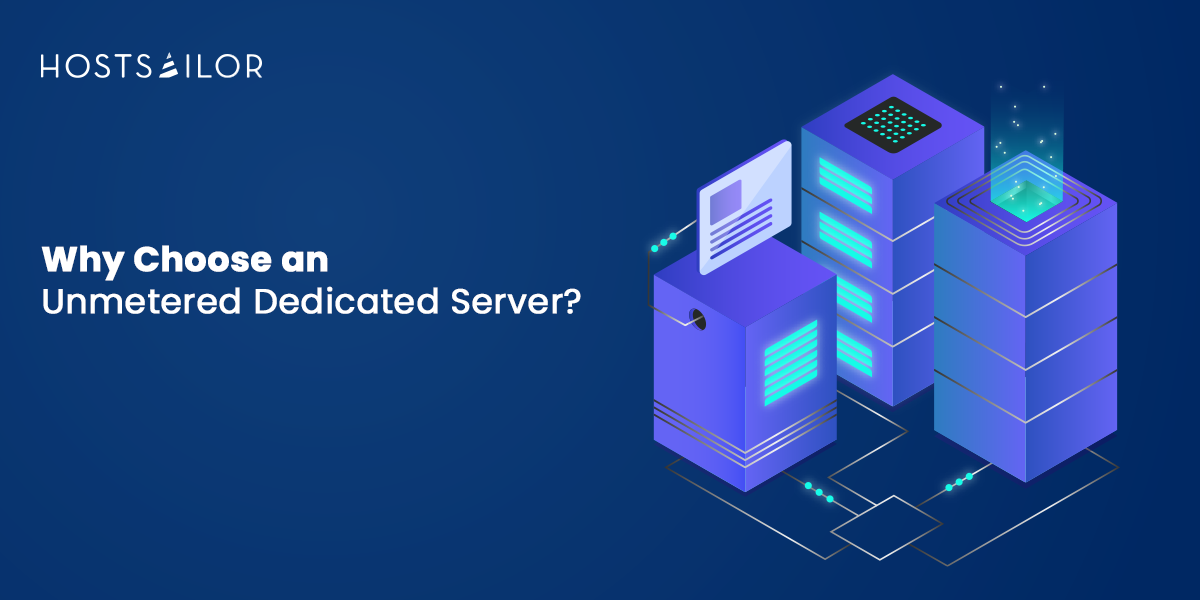Introduction
Unmetered dedicated server hosting promises businesses and developers a simple proposition: pay a fixed price and get unrestricted bandwidth capacity. Unlike metered or shared plans where traffic costs fluctuate or resources are shared, unmetered dedicated servers pair a single tenant’s hardware with a network port that allows high volume transfer without per-gigabyte billing. That clarity can make budgeting easier and reduce surprising overage charges, but “unmetered” does not mean unlimited in every technical sense. This article explains what unmetered hosting truly is, why organizations choose it, what technical factors to inspect, and how to pick a provider that aligns with performance, security, and compliance needs. The guidance below emphasizes best practices and transparent evaluation criteria so you can make an informed decision with confidence.
What is unmetered dedicated server hosting?
Unmetered dedicated server hosting is a hosting model where a physical server is leased exclusively to one customer and paired with a network port offering a fixed maximum throughput (for example, 1 Gbps or 10 Gbps) without charging for individual gigabytes transferred. The customer controls the entire server CPU, RAM, storage, OS, and network stack while the provider guarantees the network port and usually the data center infrastructure. It’s important to understand the distinction between port speed and actual sustained throughput: a 1 Gbps port can theoretically move up to ~125 MB/s, but real-world throughput depends on network path, peering, and routing. Additionally, many providers include a fair-use or acceptable-use policy to prevent abuse; this means the headline “unmetered” must be paired with the provider’s SLA and policy documents to understand any practical limits or traffic shaping.
Key benefits for businesses and developers
Unmetered dedicated servers deliver clear commercial and technical advantages. From a finance perspective, fixed monthly pricing removes variable traffic costs, simplifying forecasting for high-bandwidth applications such as large file distribution, streaming, backup/DR, and CDN origin servers. Technically, exclusive access to hardware eliminates noisy-neighbor issues present in shared environments, enabling predictable performance for compute- and I/O-intensive workloads. Full root/administrator access allows teams to customize the stack, deploy specialized networking tools, and run GPU, virtualization, or database workloads with fine-tuned configs. For compliance-sensitive operations, physical isolation reduces attack surface compared with multi-tenant cloud instances. Finally, unmetered hosting pairs well with hybrid architectures: use dedicated machines for heavy egress and cloud burst for elasticity, keeping costs efficient while maintaining control where it matters most.
Technical considerations and performance optimisation
When evaluating unmetered hosting, review both hardware specs and network topology. CPU generation, core count, RAM capacity, and storage type (NVMe vs SATA) determine application throughput and latency. For networking, ask about port speed, provider backbone quality, peering relationships, and uplink saturation during peak hours. Check for DDoS protection, redundancy in network paths, and whether the provider offers hardware firewalling or layer-7 mitigation. Performance optimisation on your side includes using efficient TCP settings, parallel transfers, CDN offload for static assets, and adaptive caching/backpressure mechanisms for uploads. Monitor with end-to-end tools (ping, traceroute, throughput tests) and implement logging to detect bottlenecks early. Also verify the provider’s backup options, out-of-band console access (IPMI/iLO), and maintenance windows so you can plan updates without surprises.
How to choose the right provider
Choosing the right unmetered provider requires balancing price with transparency, support, and compliance. Start by confirming the SLA details: uptime guarantees, credit schemes for downtime, and the provider’s escalation procedures. Scrutinize acceptable-use and fair-use policies some “unmetered” plans throttle sustained heavy usage or reserve the right to shape traffic. Evaluate support channels (24/7 phone, chat, ticket), response SLAs, and the technical expertise of the support team. Data center tier, physical security measures, and geographic location matter for latency and regulatory compliance; pick locations close to your user base or legal jurisdiction. Finally, request independent test windows or trials when possible, and insist on clear hardware refresh cycles and documented incident histories. A reputable provider will be upfront about limits and provide monitoring tools so you can verify that your traffic and performance match expectations.
Conclusion
Unmetered dedicated server hosting is a compelling option for organizations that need high, predictable bandwidth and full control over hardware. When chosen and configured correctly, it reduces variable egress costs, delivers stable performance, and supports sensitive or specialized workloads. The key to success is careful vendor due diligence: read SLAs and acceptable-use policies, test network performance, and ensure support and security meet your standards. With transparent evaluation and responsible optimisation, unmetered dedicated servers can become a reliable backbone for heavy-traffic applications and infrastructure that demand both capacity and control.
Frequently Asked Questions (FAQs)
Q: Does “unmetered” mean unlimited speed and no limits at all?
A: No. “Unmetered” usually refers to having a fixed network port without per-GB charges, but practical limits like port speed, fair-use policies, or routing constraints still apply. Always review the provider’s policy for traffic shaping or sustained throughput rules.
Q: Is unmetered hosting better than cloud for high traffic?
A: It depends. Unmetered dedicated servers can be more cost-effective for predictable, sustained high egress and give full hardware control. Cloud is better for rapid elasticity and managed services. Many organizations combine both for best results.
Q: What security measures should I expect with a provider?
A: Expect physical data center security, network-level DDoS protection options, access controls for consoles, and support for software/hardware firewalls. Confirm patching responsibilities and ask about incident response procedures.
Q: How can I measure if a provider meets performance claims?
A: Use independent throughput tests, traceroutes from multiple regions, historical uptime reports, and any trial periods the provider offers. Monitor latency, packet loss, and real application throughput under representative loads.
